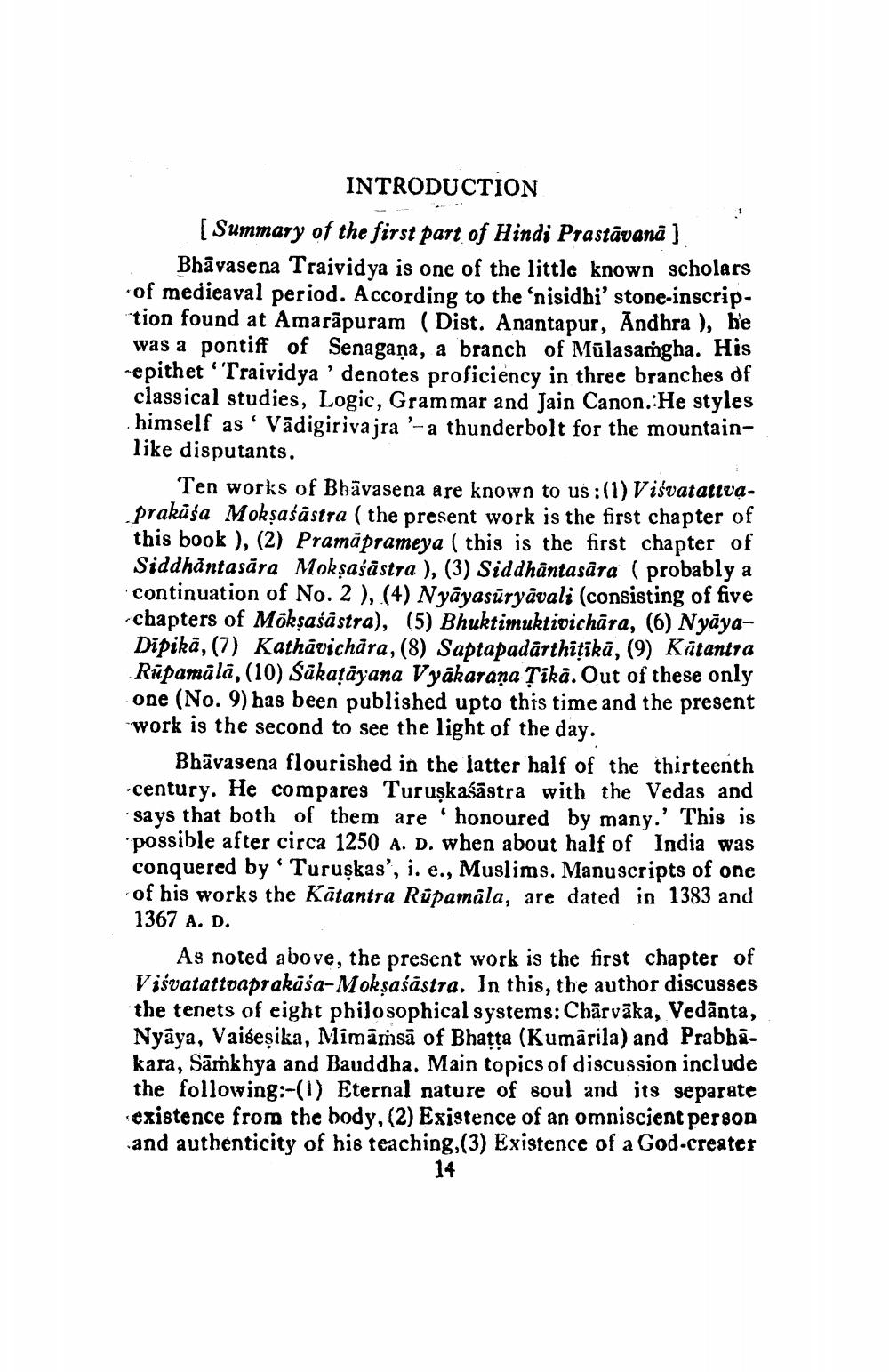________________
INTRODUCTION [ Summary of the first part of Hindi Prastāvanā)
Bhāvasena Traividya is one of the little known scholars of medicaval period. According to the ‘nisidbi' stone-inscription found at Amarāpuram (Dist. Anantapur, Andhra ), be was a pontiff of Senagaña, a branch of Mūlasamgha. His -epithet ''Traividya ' denotes proficiency in three branches of classical studies, Logic, Grammar and Jain Canon.:He styles himself as ' Vādigirivajra '-a thunderbolt for the mountainlike disputants.
Ten works of Bhāvasena are known to us:(1) Visvatativaprakāśa Moksaśāstra ( the present work is the first chapter of this book ), (2) Pramāprameya ( this is the first chapter of Siddhantasāra Mokşaśāstra ), (3) Siddhantasāra ( probably a continuation of No. 2 ), (4) Nyāyasuryāvali (consisting of five chapters of Mökşaśāstra), (5) Bhuktimuktivichāra, (6) NyāyaDipikā,(7) Kathāvichāra, (8) Saptapadárthitīkā, (9) Kitantra Rūpamālā,(10) Śākațāyana Vyakarana Țikā. Out of these only one (No. 9) has been published upto this time and the present work is the second to see the light of the day.
Bhāvasena flourished in the latter half of the thirteenth -century. He compares Turuşkaśāstra with the Vedas and ·says that both of them are honoured by many.' This is possible after circa 1250 A. D. when about half of India was conquered by' Turuşkas’, i. e., Muslims. Manuscripts of one of his works the Kätantra Rūpamala, are dated in 1383 and 1367 A. D.
As noted above, the present work is the first chapter of Visvatattoaprakāśa-Moksaśāstra. In this, the author discusses the tenets of eight philosophical systems: Chārvāka, Vedānta, Nyāya, Vaiseșika, Mimāmsā of Bhatta (Kumārila) and Prabhakara, Sāmkhya and Bauddha. Main topics of discussion include the following:-(1) Eternal nature of soul and its separate existence from the body, (2) Existence of an omniscient person and authenticity of his teaching (3) Existence of a God.creater
14




